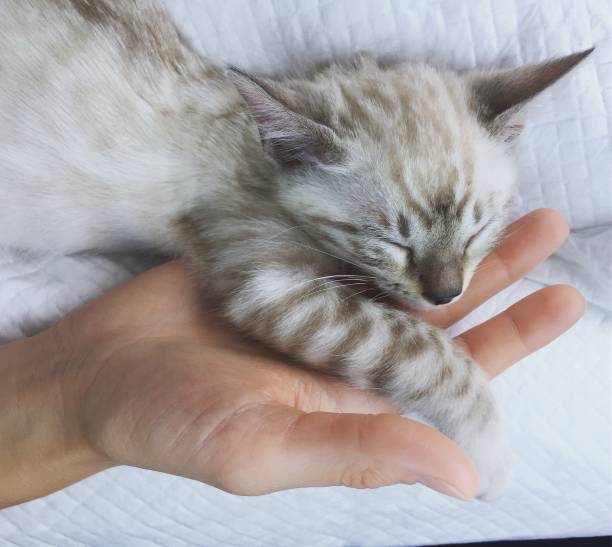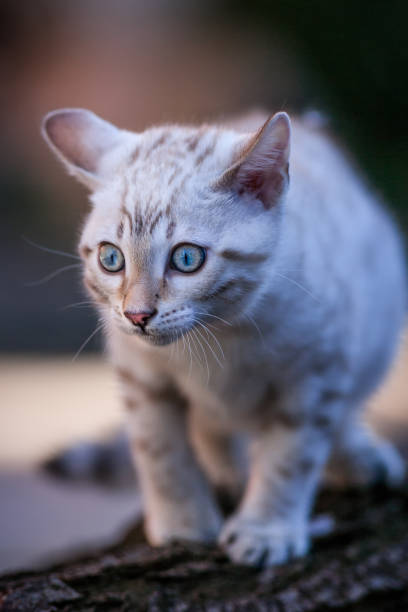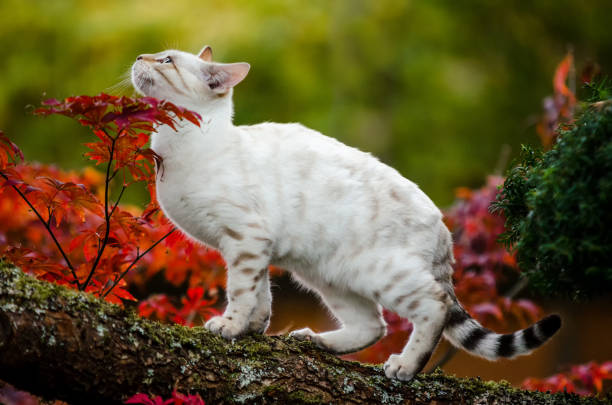The allure of the seal lynx snow Bengal, a remarkable member of the Bengal cat breed, lies not only in its striking appearance but also in the unique genetic tapestry that frames its existence. As individuals seek out snow lynx bengal kittens for sale, they are often captivated by the breed’s vivid markings and luxurious coat, reminiscent of their wild ancestors. However, the seal lynx snow Bengal is not just a feast for the eyes; it embodies a fascinating blend of wild charisma and domestic charm, making it a sought-after companion for cat lovers around the globe.
This article aims to explore the intricacies of the seal lynx snow Bengal, from its historic origins and complex genetics to its distinct physical characteristics and care requirements. As we delve into the history and origins of the seal lynx point Bengal, readers will gain insights into the breed’s evolution and the efforts to preserve its majestic qualities.
Subsequent sections will illuminate the seal lynx Bengal cat’s genetics, shedding light on how this influences their unique coat patterns and colors, including the illustrious snow seal lynx Bengal variant. Additionally, practical advice on caring for your seal lynx Bengal kitten ensures that owners can provide the best environment for these enchanting creatures. Through understanding the seal lynx snow Bengal’s needs and characteristics, enthusiasts and prospective owners alike can foster a deeper connection with these captivating cats.
History and Origins of the Seal Lynx Snow Bengal
The origins of the Seal Lynx Snow Bengal trace back to experimental breeding efforts in the late 1980s and early 1990s by prominent breeders Gene Johnson of Gogees cattery and Bob Dundon of Nola cattery. Faced with a limited gene pool, these breeders introduced the Burmese domestic cat into their breeding programs, a pivotal move that significantly diversified the genetic makeup of the Bengal breed 10.
This experimental crossbreeding led to the birth of the first seal sepia “snow leopard” named Kotton Pickin, who exhibited green eyes—a notable departure from typical Bengal characteristics. Kotton Pickin’s lineage included influential Bengals such as Millwood Silk’n Cinders and Millwood Rajin Cajun, foundational figures in the development of the Bengal breed’s diverse color patterns 10.
Kotton Pickin himself became a cornerstone for the Snow Bengal lineage, particularly influencing the variety of colors seen in the breed today. His contributions were recognized in 1993 when the Seal Lynx Point, Seal Mink, and Seal Sepia colors were officially granted Championship status by TICA, marking a significant milestone in the breed’s acceptance and standardization 10.
Genetically, the Seal Lynx Snow Bengal is characterized by the cs/cs genotype, indicative of the recessive Siamese gene which plays a crucial role in the cat’s distinctive appearance. This genetic trait results in the lightest coat variation among snow Bengal cats, with kittens typically born completely white or with very light patterns. These patterns and the overall coloration of the coat develop gradually, often taking several months to fully emerge 10.
The unique point coloration, particularly visible on the face, ears, feet, and tail, tends to darken first, followed by the rest of the coat. This gradual intensification of color contributes to the dynamic and evolving beauty of the Seal Lynx Snow Bengal 10.
It is important to note that the breeding of Seal Lynx Bengals follows specific genetic rules. For instance, breeding two Lynx Bengals will only produce Lynx offspring, while breeding a Lynx with a Mink can result in a mix of Lynx and Mink kittens. However, a Lynx Bengal will never produce a Sepia offspring, even if bred with a Sepia partner 1011.
This careful and strategic breeding, combined with the dedicated efforts of early breeders like those at Gogees cattery, has not only preserved but also enhanced the stunning and diverse aesthetic attributes of the Seal Lynx Snow Bengal, making it a beloved variant within the Bengal cat community 10.
Seal Lynx Bengal Cat Genetics

Recessive Gene Characteristics
The genetic foundation of the Seal Lynx Snow Bengal is anchored by the recessive Siamese gene, denoted as cs/cs. This specific genetic configuration is responsible for the lightest coat variations observed in snow Bengal cats 1920. Kittens of this variety are typically born with either a completely white coat or a very faint pattern. The distinctiveness of the Seal Lynx’s appearance, characterized by its contrast and coloration, begins to emerge as the kittens age, with darker coloring becoming visible when they are between one to two weeks old 1920.
Inheritance Patterns
The breeding patterns of Seal Lynx Bengals follow strict genetic rules, crucial for maintaining the breed’s unique characteristics. When two Seal Lynx Bengals (cs/cs) are bred together, the offspring will invariably inherit the Lynx pattern 1920. Conversely, if a Seal Lynx Bengal is bred with a Mink Bengal, the resulting litter can display a mix of Lynx and Mink patterns, showcasing the diversity within the breed 1920. However, it is important to note that a Seal Lynx Bengal cannot produce Sepia offspring, even when paired with a Sepia Bengal 1920.
This genetic predictability is essential for breeders aiming to sustain or enhance specific traits within the Bengal breed. The necessity for both parents to carry the recessive “snow” gene to produce a “snow” kitten ensures that the traits associated with the Seal Lynx Snow Bengal are preserved and passed on effectively 17.
Physical Characteristics of a Seal Lynx Snow Bengal
Coat Colors and Markings
The Seal Lynx Snow Bengal exhibits a distinct and visually striking coat pattern that sets it apart from other Bengal variations. These cats typically possess a white or pale cream-colored base coat, adorned with seal markings that can range from dark to light shades. The patterning is unique to each individual cat and may include spots or marbling, contributing to their exotic appearance reminiscent of a miniature snow leopard 2228. As the cat matures, the coat color and markings darken over time, with the final hues taking several months to fully develop 2329. This gradual change adds a dynamic element to their appearance, making each Seal Lynx Snow Bengal a unique entity in terms of coloration.

Eye Color and Facial Features
One of the most captivating aspects of the Seal Lynx Snow Bengal is its bright blue eyes, a consistent trait across this subtype that significantly enhances their allure 2228. The facial features include a distinct pattern around the mouth, edged in a creamy cappuccino color with brown accents, adding to their striking look 23. Their noses are typically brownish pink, providing a soft contrast to the more pronounced colors of their coat 23. These characteristics not only contribute to the aesthetic appeal of the Seal Lynx Snow Bengal but also reflect the intricate genetic influences that shape this remarkable breed.
Caring for Your Seal Lynx Snow Bengal
Diet and Nutrition
Seal Lynx Snow Bengals are active cats that require a diet rich in high-quality food to support their lean and healthy muscle development. It is crucial for owners to feed their Snow Bengal kittens food that is approved by the AAFCO for the growth and development stage.
The choice between dry kibble, wet food, or raw meals depends on the owner’s preference, but it should always be a complete food designed for the cat’s specific life stage 35. A balanced diet is essential, and for Bengal cats, 70% of their diet should consist of lean raw meat. To avoid parasitic infections, the meat should be pre-frozen solid 31. Additionally, it is vital to ensure the diet is nutritionally complete and balanced, especially if opting for raw food as the main diet. Consulting with a vet or a nutritionist is recommended to optimize the cat’s diet 32.

Grooming Tips
The Snow Bengal breed has a short and dense coat that requires minimal maintenance. A quick weekly grooming session is sufficient to keep their coat looking sleek 35. Despite their love for water, Snow Bengals rarely need a bath. However, regular dental care is essential to help prevent periodontal disease 35. Their nails should be clipped regularly, ideally once a month, and although they do not shed much, a weekly brushing can reduce shedding and prevent matting 3738. Proper eye and ear care are crucial, and any changes in vision or signs of ear infections should prompt a visit to the vet 38.
Health and Wellness
Seal Lynx Snow Bengals can be prone to various inherited health conditions, so it’s important for owners to discuss these conditions with breeders and request information on health tests conducted on the parent cats 35. Regular vet visits are vital for monitoring the development of the kitten and ensuring it receives essential vaccination shots 38.
Bengal cats can suffer from conditions like patellar luxation, hip dysplasia, distal neuropathy, hypertrophic cardiomyopathy, progressive retinal atrophy, and flat-chested kitten syndrome 3537. A balanced diet, routine exercise, and regular veterinary care can help delay the onset of genetic diseases common in this breed 38. Additionally, Bengals are natural predators, and their diet should consist mainly of meat. It’s important to avoid foods that can cause health issues, such as pork, lamb, and certain types of poultry, as well as fatty, spicy, or processed foods 31. Regular de-worming and maintaining good personal hygiene are essential to minimize the chances of parasitic infection 31.
Conclusion
Through this exploration of the Seal Lynx Snow Bengal, we’ve uncovered the rich tapestry of genetics, care, and history that shapes these captivating creatures. The combination of their striking physical characteristics, including their distinctive coat patterns and brilliant blue eyes, coupled with the meticulous care they require, highlights not just the beauty of the breed but the responsibilities of ownership. Their origins, deeply tied to innovative breeding practices, reveal a fascinating journey from wild ancestry to cherished companions, underscoring the breed’s unique place in the hearts of cat enthusiasts.
Understanding the Seal Lynx Snow Bengal’s needs—from their diet and health care to their grooming and well-being—offers a roadmap for those looking to welcome these enchanting cats into their lives. The significance of their care, grounded in knowledge of their genetic background and physical attributes, ensures that these felines not only thrive but also enrich the lives of those around them. As we reflect on the journey of the Seal Lynx Snow Bengal from its origin to the present day, it’s clear that their story is one of beauty, complexity, and enduring appeal, a testament to the breed’s singular charm and the dedicated community that surrounds them.
FAQs
What are the characteristic behaviors of snow lynx Bengal cats?
Bengal cats are known for their playful nature, often engaging in hours of activity with appropriate toys and interactive play. They exhibit a sweet, loyal, and loving temperament, forming strong bonds with their owners while also valuing their independence. These cats thrive in family settings, provided they have ample space and opportunities for play and exploration.
How should Bengal cats be cared for?
The care requirements for Bengal cats align with those of other cat breeds, necessitating a balanced diet, routine nail trimming, and regular dental hygiene practices.
Are there common behavioral issues in Bengal cats?
Bengal cats may exhibit certain behavioral challenges, such as increased vocalization to express boredom or dissatisfaction. Their innate curiosity can lead to destructive behaviors, like knocking objects over to observe the outcome.
What is a unique preference of Bengal cats?
A distinctive trait of Bengal cats is their affinity for water. It’s not unusual for a Bengal to accompany their owner in water-related activities, including swimming in a pool or joining them in the bath.
